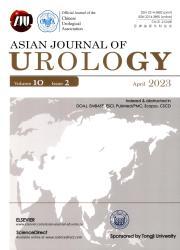Robotic urologic applications of the hinotori™ Surgical Robot System
IF 2.4
3区 医学
Q2 UROLOGY & NEPHROLOGY
引用次数: 0
Abstract
Objective
To assess the safety and effectiveness of urological tumor surgeries using the hinotori™ Surgical Robot System (hinotori) in a real-world clinical setting.
Methods
All surgeries including robot-assisted radical prostatectomy (RARP), robot-assisted partial nephrectomy (RAPN), robot-assisted radical nephrectomy (RARN), robot-assisted nephroureterectomy (RANU), robot-assisted adrenalectomy (RAA), and robot-assisted radical cystectomy with intracorporeal urinary diversion (RARC+ICUD) for urological tumors with the hinotori and da Vinci surgical system (da Vinci) from January 2022 to September 2023 were enrolled. We evaluated the safety and effectiveness of surgeries using the hinotori compared with those using the da Vinci.
Results
Robotic surgeries using the hinotori were performed in a total of 91 cases, comprising 42 cases of RARP, 18 cases of RAPN, six cases of RARN, 10 cases of RANU, 13 cases of RAA, and two cases of RARC+ICUD; no major intraoperative complications were observed in any of the cases using the hinotori; no major postoperative complications occurred in any of the cases; no case experienced an unrecoverable equipment error during surgery. Meanwhile, robotic surgeries using the da Vinci were performed in a total of 277 cases, comprising 126 cases of RARP, 94 cases of RAPN, 12 cases of RARN, 10 cases of RANU, 20 cases of RAA, and 15 cases of RARC+ICUD; major intraoperative complications occurred in two cases; major postoperative complications occurred in seven cases; seven cases required transfusion; one case underwent conversion to open surgery; during the study period, no case experienced an unrecoverable equipment error. Surgical outcomes for cases with the hinotori were comparable to those with the da Vinci.
Conclusion
This study demonstrated that the hinotori is a safe and feasible tool for robotic surgeries in the field of urology.
hinotori™手术机器人系统在泌尿外科的应用
目的评估在现实世界的临床环境中使用hinotori™手术机器人系统(hinotori)进行泌尿外科肿瘤手术的安全性和有效性。方法选取2022年1月至2023年9月在hinotori和达芬奇手术系统(da Vinci)下进行的所有泌尿外科肿瘤手术,包括机器人辅助根治性前列腺切除术(RARP)、机器人辅助部分肾切除术(RAPN)、机器人辅助根治性肾切除术(RARN)、机器人辅助肾输尿管切除术(RANU)、机器人辅助肾上腺切除术(RAA)和机器人辅助膀胱根治性膀胱内尿分流术(RARC+ICUD)。我们比较了使用hinotori和使用da Vinci的手术的安全性和有效性。结果应用hinotori机器人手术共91例,其中RARP 42例,RAPN 18例,RARN 6例,RANU 10例,RAA 13例,RARC+ICUD 2例;在所有使用hinotori的病例中均未观察到重大术中并发症;所有病例均未发生重大术后并发症;没有病例在手术中出现不可恢复的设备错误。同时,采用达芬奇机器人手术共277例,其中RARP 126例,RAPN 94例,RARN 12例,RANU 10例,RAA 20例,RARC+ICUD 15例;术中出现重大并发症2例;术后发生重大并发症7例;7例需要输血;1例转开腹手术;在研究期间,没有病例出现不可恢复的设备错误。hinotori病例的手术结果与达芬奇病例相当。结论hinotori在泌尿外科机器人手术中是一种安全可行的工具。
本文章由计算机程序翻译,如有差异,请以英文原文为准。
求助全文
约1分钟内获得全文
求助全文
来源期刊

Asian Journal of Urology
UROLOGY & NEPHROLOGY-
CiteScore
4.00
自引率
3.80%
发文量
100
审稿时长
4 weeks
期刊介绍:
Asian Journal of Urology (AJUR), launched in October 2014, is an international peer-reviewed Open Access journal jointly founded by Shanghai Association for Science and Technology (SAST) and Second Military Medical University (SMMU). AJUR aims to build a communication platform for international researchers to effectively share scholarly achievements. It focuses on all specialties of urology both scientifically and clinically, with article types widely covering editorials, opinions, perspectives, reviews and mini-reviews, original articles, cases reports, rapid communications, and letters, etc. Fields of particular interest to the journal including, but not limited to: • Surgical oncology • Endourology • Calculi • Female urology • Erectile dysfunction • Infertility • Pediatric urology • Renal transplantation • Reconstructive surgery • Radiology • Pathology • Neurourology.
 求助内容:
求助内容: 应助结果提醒方式:
应助结果提醒方式:


